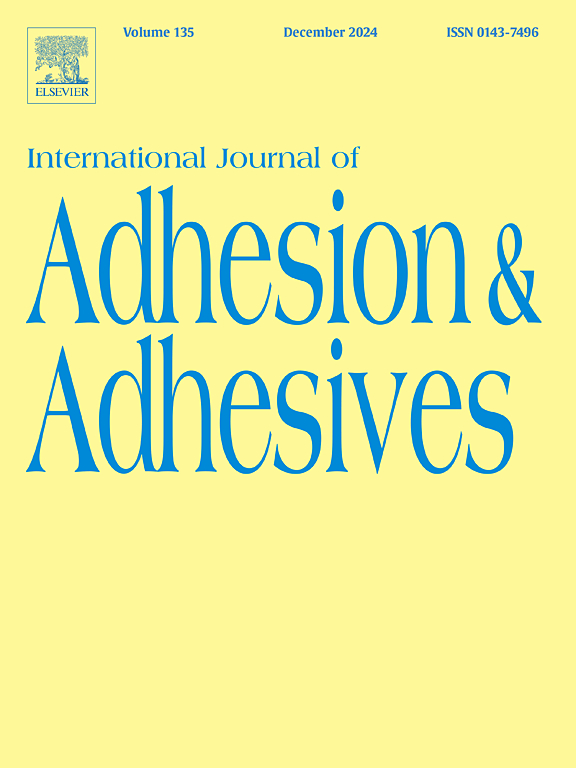Adhesion properties of thiol-acrylate–epoxy polymer networks based on thiol–epoxy ‘click’ chemistry
IF 3.2
3区 材料科学
Q2 ENGINEERING, CHEMICAL
International Journal of Adhesion and Adhesives
Pub Date : 2024-12-02
DOI:10.1016/j.ijadhadh.2024.103900
引用次数: 0
Abstract
This study examined the preparation of epoxy resins with enhanced mechanical strength, modified with thiol-acrylate segments integrated into the polymer network via a thiol–epoxy “click” reaction. Thiol-acrylate–epoxy polymers were synthesized using both single and dual curing processes. In the single curing process, a polythioether (thiol-acrylate) prepolymer was synthesized. The results showed that an epoxy formulation containing 30 wt% of this prepolymer achieved the highest lap shear strength, approximately 57% higher than that of neat epoxy. This improvement indicates strong interactions between the thiol-acrylate segments and the epoxy matrix due to the thiol–epoxy “click” reaction. Dual-cure systems exhibited slightly higher tensile strengths compared to single-cure systems, particularly as the thiol-acrylate segment content increased up to 20%, while also maintaining superior lap shear strengths. Incorporating thiol-acrylate segments raised the tensile strength to 34 MPa, about 25% higher than that of pure epoxy. Polymer networks containing 20–30 wt% of thiol-acrylate segments, in both single and dual-cure systems, demonstrated significant potential as effective adhesive systems. These findings contribute to the development of adhesives with enhanced tensile and lap shear strength, as well as the identification of suitable curing methods.

求助全文
约1分钟内获得全文
求助全文
来源期刊

International Journal of Adhesion and Adhesives
工程技术-材料科学:综合
CiteScore
6.90
自引率
8.80%
发文量
200
审稿时长
8.3 months
期刊介绍:
The International Journal of Adhesion and Adhesives draws together the many aspects of the science and technology of adhesive materials, from fundamental research and development work to industrial applications. Subject areas covered include: interfacial interactions, surface chemistry, methods of testing, accumulation of test data on physical and mechanical properties, environmental effects, new adhesive materials, sealants, design of bonded joints, and manufacturing technology.
 求助内容:
求助内容: 应助结果提醒方式:
应助结果提醒方式:


